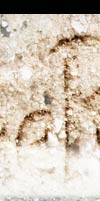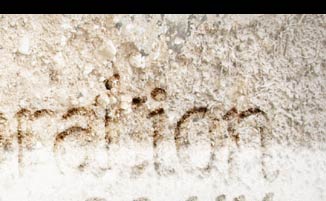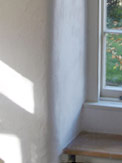
Specifying Lime Types for Period and Listed Buildings
The information on this page is from the Building Conservation website
What is Lime?
Some useful definitions
by
Jonathan Taylor
Lime Putty (non-hydraulic lime) is produced by burning relatively pure limestone (calcium carbonate) at between 850 and 1,300 degrees C. The resulting calcium oxide is slaked in clean water to produce lime putty (calcium hydroxide). This form of lime cures (carbonates) by absorbing carbon dioxide, reverting to calcium carbonate. It is usually stored under water to prevent it curing prematurely.
Dry Hydrate of Lime is produced from the same material and in the same way as lime putty except that, instead of slaking under water, the calcium oxide is hydrated with a precisely controlled amount of water to produce a dry powder (calcium hydroxide). Unfortunately it begins to carbonate from the moment it is produced and is stored in paper sacks. Tests show that up to 16 per cent of the contents of an old sack of dry hydrate may have reverted to calcium carbonate. Practitioners looking for a pure source of calcium hydroxide tend to prefer lime putty.
Hydraulic Lime is also produced by a much the same method as dry hydrate of lime but using limestone that contains a proportion of fine clay or silica in suspension. The advantage of an hydraulic lime is that it sets more rapidly and does not need to be in contact with the air to set, so it can be used to fill deep voids in a wall without fear that the lime may never reach its full strength. (An hydraulic set can also be achieved by adding a fine powder of fired clay or certain other 'pozzolanic' materials to an ordinary lime putty.) The percentage of fine clay or silica in suspension determines the reactivity of the material which ranges from eight per cent through to 25 per cent and is often categorised as either feebly, moderately or eminently hydraulic.
Portland Cement is produced by burning together carefully measured quantities of relatively pure limestone and clay which are then crushed and fired at higher temperatures to produce the very reactive material. A mortar made with Portland cement sets rapidly but for traditional construction it has the disadvantage of being much harder, less flexible and less porous than one made with lime.
More advice can be found on the main 'Why use Lime' page »












